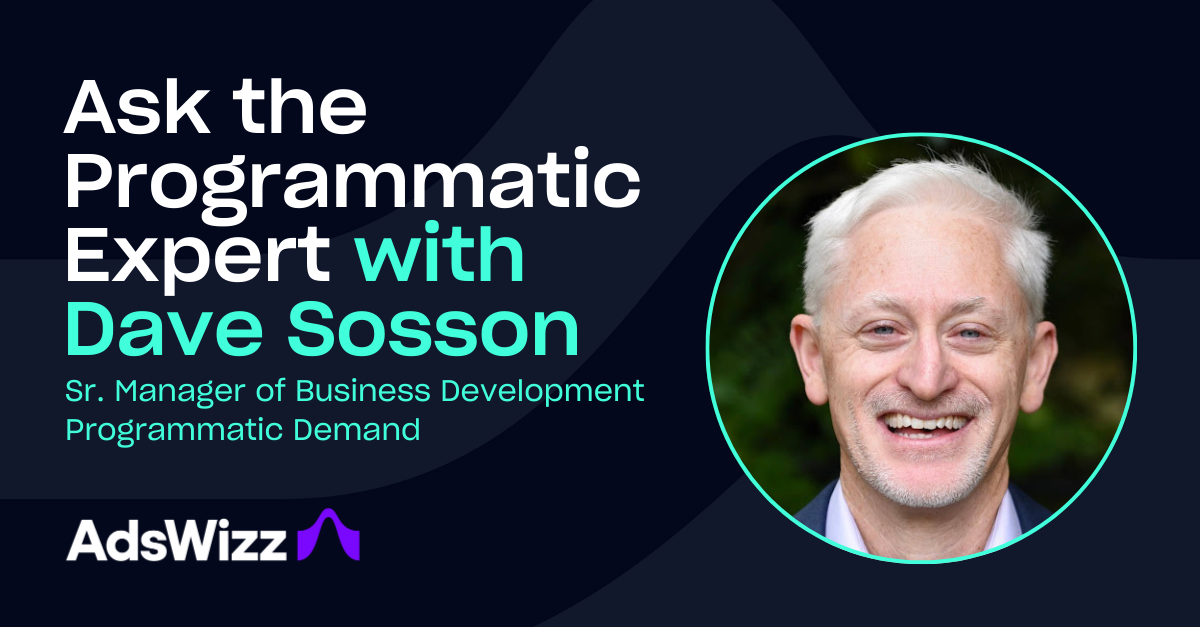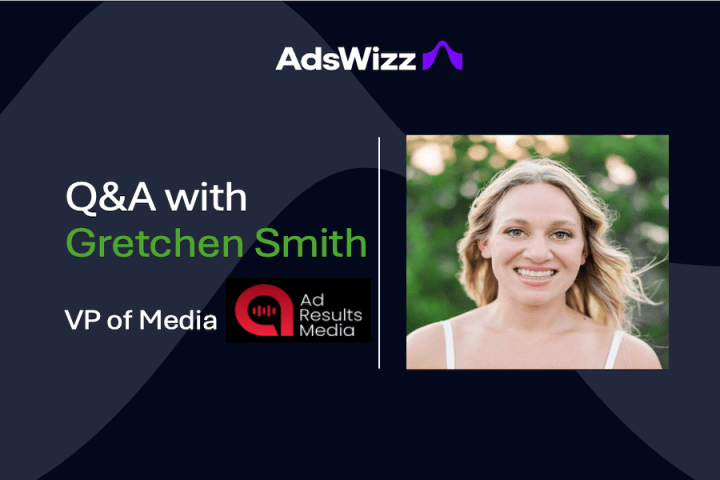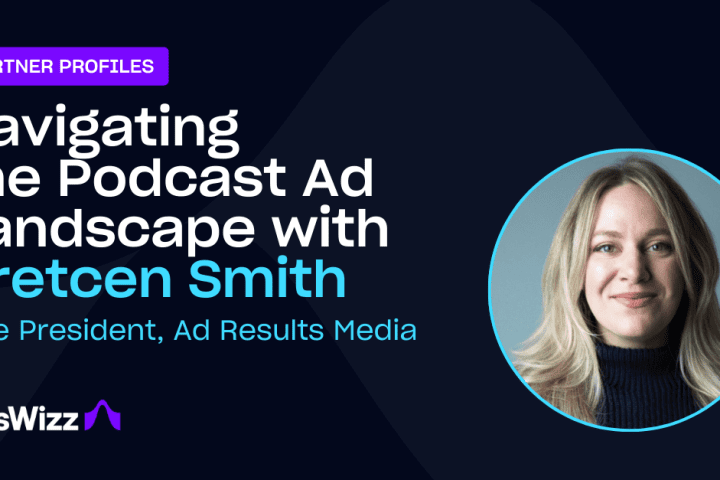In a recent interview I conducted with my colleague Dave Sosson, Senior Manager of Business Development, Programmatic Demand at AdsWizz, Dave discussed the challenges, technological advancements, and strategic insights shaping the audio advertising industry.
Dave’s experience spans five years in digital audio and fifteen years before that in roles across programmatic video, gaming, and integrated display media. Dave works on the AudioMatic DSP team, providing agencies and brands access to technology to deploy comprehensive digital audio campaigns spanning streaming audio and podcasts.
With all the changes in digital audio and the constant shifts in consumer behavior, how has programmatic demand evolved to keep up?
We’ve observed significant advancements in measurement techniques, particularly within our audio DSP platform. By integrating attribution, we now have the capability to monitor up to eight distinct online conversion events, commonly referred to in the industry as “hear-through.” This means that even if a listener hears an audio advertisement and later converts through another medium—like converting via search or social media at the office after their mass transit commute—we can still link the conversion back to the original audio ad. So, in the past, this had been a miss for audio. Now, we can tie audio and online conversions back to audio ads.
We also provide Second-Screen Retargeting (audio-to-display that gives more down-funnel metrics to examine the response), integrated AI transcription that automatically and intelligently transcribes and categorizes podcast episodes, and, lastly, block listening capabilities that stop fraudulent domains and malicious IPs.
Do you think advertisers should compare audio metrics to other forms of digital media?
The good news is that we can really start to compare engagement. A unified attribution strategy focused on site-driven metrics allows us to compare apples to apples. That said, comparing audio to a browser-based environment like display or online video can be challenging. Because audio advertising is deployed in a player-based environment, the comparisons will not apply on a pure apples-to-apples basis.
How would you help advertisers make sense of their performance data and take appropriate actions based on those insights?
We recommend using a bespoke approach with advertisers as we examine the different creative tools we can access. We want to ensure we’ve gotten as granular as possible from an audience perspective while balancing efficiency and detailed segmentation within the AudioMatic platform. For example, suppose we have a product for which we know the advertiser is looking to show action via mobile. In that case, we recommend utilizing the ShakeMe interactive unit.
Just shifting focus, could you discuss the role of the relationship among publishers, advertisers, and technology partners in driving the success of programmatic demand efforts?
We want the platform to be as robust and flexible as possible. We collaborate closely with our publisher partner teams to convey our clients’ demand needs (i.e., Automated Host-Read Ads and Multicultural Inventory access). We also have monthly (sometimes twice monthly) meetings with our agency partners utilizing the platform. Then, we can communicate that information regarding what we’re hearing so that what’s available lines up with what we’re being asked from the market.
Any standout examples of partnerships that come to mind?
We have some great case studies that speak to these metrics. Campaigns like Sea-Doo achieved a call-to-action rate of over 2% with Second Screen Retargeting, significantly outperforming the .05% rate typical of display advertising. With ShakeMe, we see averages of around 0.7% to 2.5%.
Moving to a topic that has implications across all facets of digital, how has your team adapted to keep up with recent changes in privacy law?
We’re not exactly sure when cookies will be a thing of the past. Still, when Google finally starts to deprecate cookies in Chrome at scale, many things will continue to evolve and become more accessible and privacy-friendly. We’ve been concentrating heavily on contextual targeting. It is a comprehensive and effective strategy, particularly in podcast advertising, where we have developed considerable expertise.
For example, Predictive Audiences is a cookie-less, privacy-friendly solution that combines AI transcription technology with contextual data via direct publisher connections in concert with 300-plus audiences from Comscore. Also, great things are happening on the music side, such as Mood Targeting, which helps brands better connect with audiences by reaching them while listening to music that matches the mood of the song they are listening to.
Are there any best practices you recommend for ensuring compliance with data privacy laws?
I think a crucial piece is that it has to do with first-party data. There’s always an interest in utilizing it. And so if that’s something that an advertiser has, and they want to use it as a means for reaching their customer base, then we need to be working with a partner as we do here (like with LiveRamp) so that we know we’re doing that in a compliant way. So, there are partners in the space where we can collaborate with our advertising partners to ensure compliance.
Let’s talk about the future of digital audio, particularly with programmatic. Do you see any key trends on the horizon?
Synthetic Voice combined with Dynamic Creative Optimization (DCO) to beta test ads. For example, if an advertiser wants to test different calls-to-action, we can create ads in real-time with Synthetic Voice technology to test different spot lengths. This can be coupled with our ability to view available inventory in real-time in custom dashboards built into our DSP platform. So, when you test different audio ads very (in terms of cost and investment) coupled with real-time availability, it is evident that audio is more than just a branding medium.
How about agencies? What’s one bit of advice you would give to an agency partner?
I think the most important thing that I would say is to take a holistic view of audio as an advertising vehicle. So, again, factoring in audience segmentation at scale, viewing it through a real-time availability lens, integrating attribution, and then utilizing creative solutions like Second-Screen Retargeting and ShakeMe.
Looking Ahead
My conversation with Dave was a testament to the innovative spirit and problem-solving ingenuity that drives the Adswizz mission. As we navigate the intricacies of programmatic audio advertising, it’s clear that the future holds immense possibilities. Together, we are setting the stage for an era of audio advertising that is more dynamic, effective, and connected than ever before.
Contact us today to learn more about AudioMatic and the audio advertising strategies that can help you achieve maximum audience engagement!
By Daniel Einhorn, Senior Manager, Content Marketing


